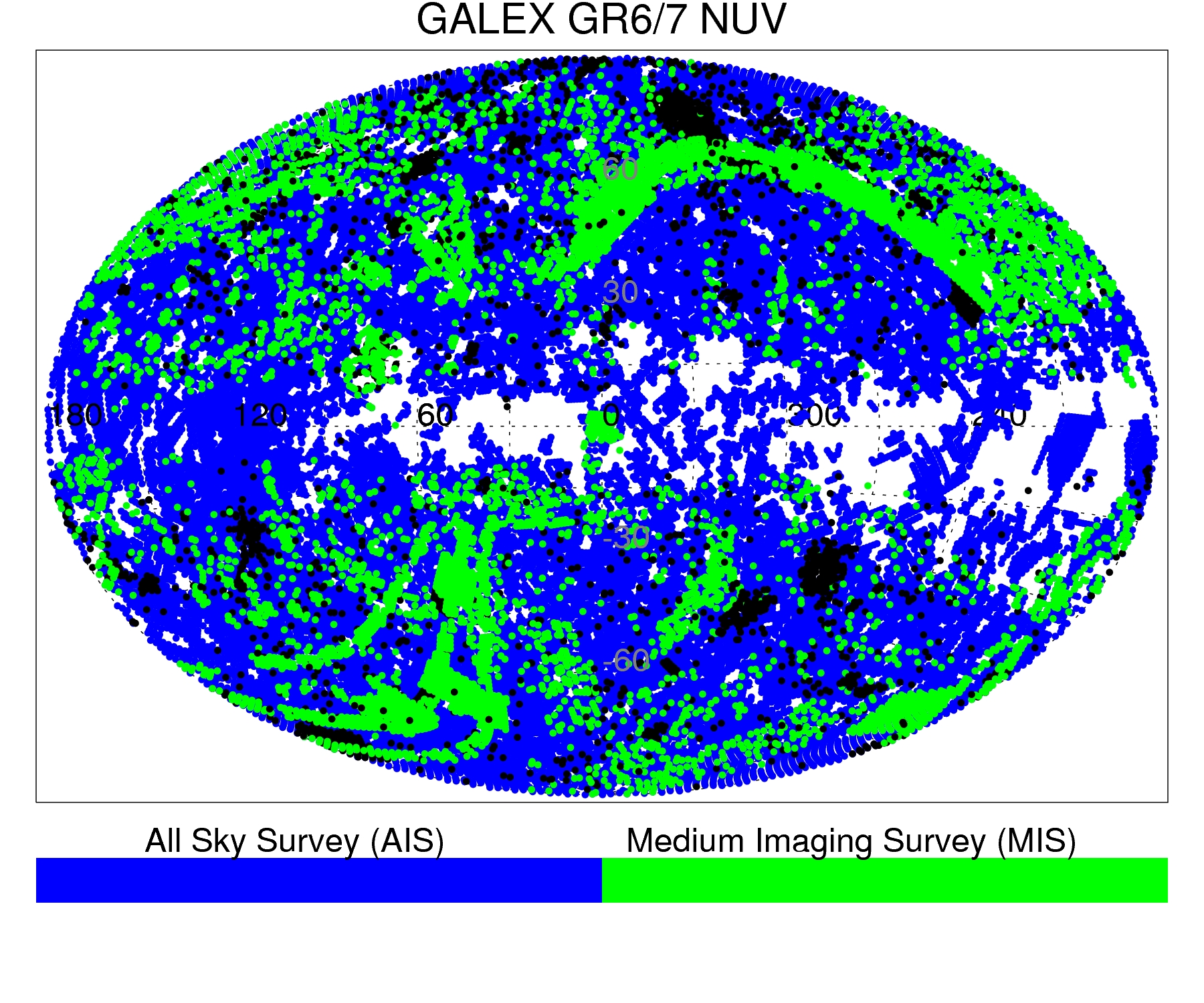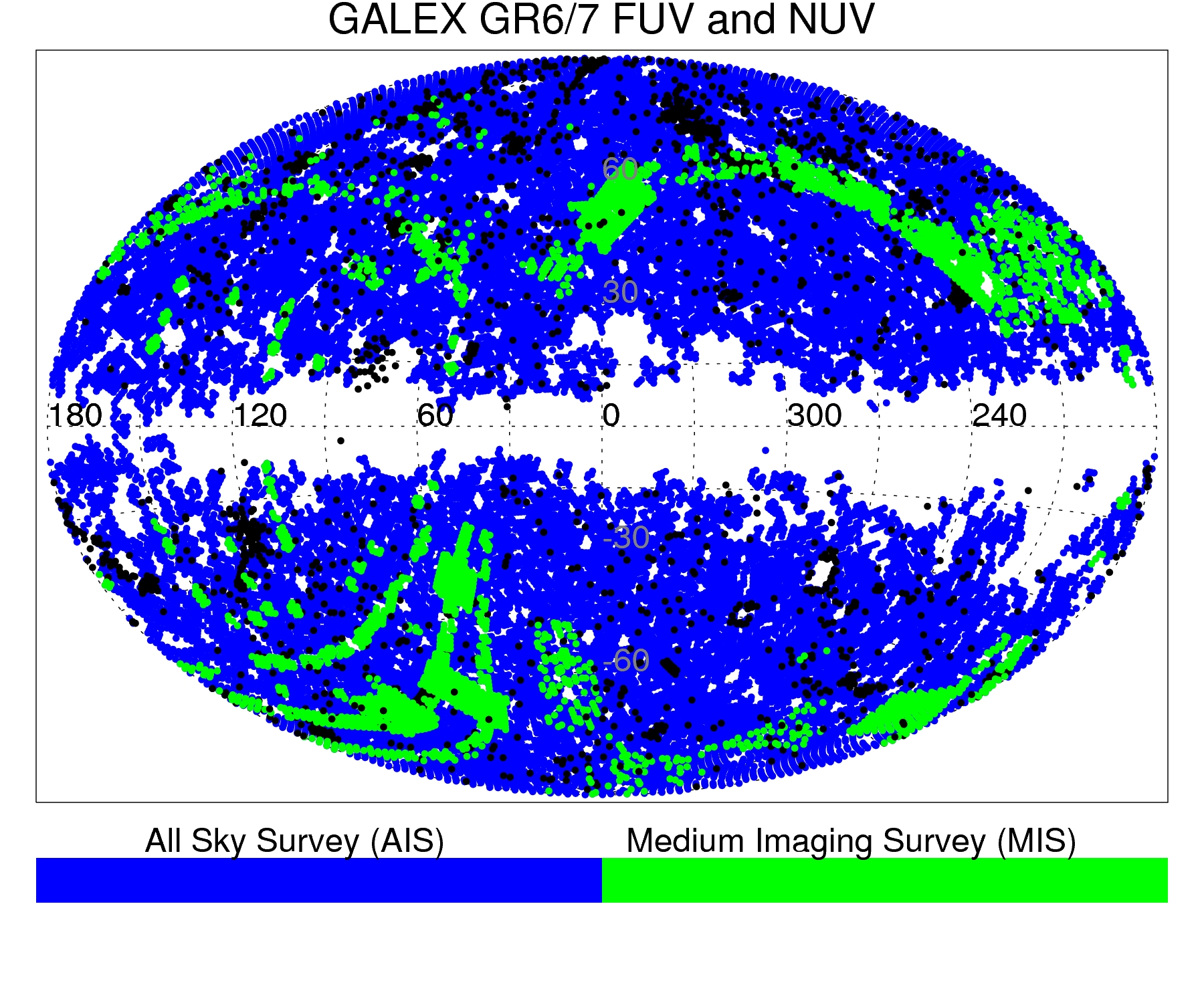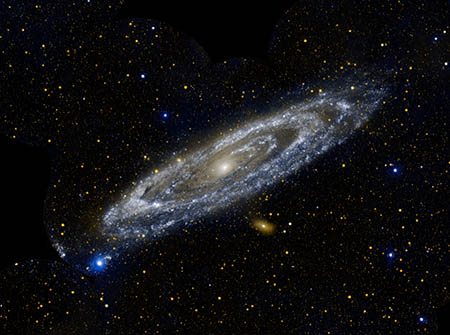Mission Overview
Map of Observations


Wavelength Coverage

The Galaxy Evolution Explorer (GALEX) satellite was a NASA mission led by the California Institute of Technology, whose primary goal was to investigate how star formation in galaxies evolved from the early Universe up to the present. GALEX used microchannel plate detectors to obtain direct images in the near-UV (NUV) and far-UV (FUV), and a grism to disperse light for low resolution spectroscopy. The FUV detector ceased operations in 2009, but the NUV detector lasted the entire duration of the mission. The telescope had a 1.25 degree field-of-view, and collected data as time-tagged photon events. The telescope only took science data while behind Earth's shadow (referred to as an "eclipse"). Each eclipse lasted approximately 30 minutes, and could observe one or more pointings on the sky (known as "visits"), which could last 90 seconds up to the full ~30 minutes. Multiple "visits" to the same part of the sky could then be combined by the GALEX pipeline to make a "coadd". In addition to All-Sky, Medium, and Deep Imaging Surveys (shallower to deeper observations), GALEX conducted a Nearby Galaxy Survey and supported a number of Guest Investigator programs, ultimately observing 77% of the sky at various depths in at least one band. After the primary mission ended, an extension was run by CalTech called the CAUSE ("Complete the All-Sky UV Survey Extension"). This mode of operation was funded by individuals or institutions, had relaxed spacecraft engineering constraints, and generally observed bright regions that were of limits during the primary missions, or were not visited long enough to enable the science the participating members wanted to do. Some, but not all, of the CAUSE data is available at MAST.
Active From
Launch: April 28, 2003
Observing: July 7, 2003 - February 7, 2012
Resolution
- 1.5" per pixel
- Image FWHM: ~4.2" (FUV) ; ~5.3" (NUV)
- Spectral Resolution: ~200 (FUV) ; ~118 (NUV)
Capabilities
- Imaging
- Grism spectroscopy
- Time Series Observations
Documentation
Search Tools
Featured Data Products
-
Visit Level Intensity Maps
 Per Visit Intensity Map: Photons per pixel per second corrected for the relative response. Filename: [f/n]d-int.fits.gz
Per Visit Intensity Map: Photons per pixel per second corrected for the relative response. Filename: [f/n]d-int.fits.gz
-
Extracted Grism Spectra
 Raw extracted 1-D uncalibrated spectra of each source in terms of photons/second versus arcseconds. Filename: -xg-gsp.fits
Raw extracted 1-D uncalibrated spectra of each source in terms of photons/second versus arcseconds. Filename: -xg-gsp.fits










